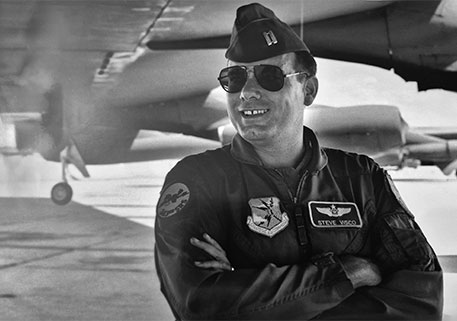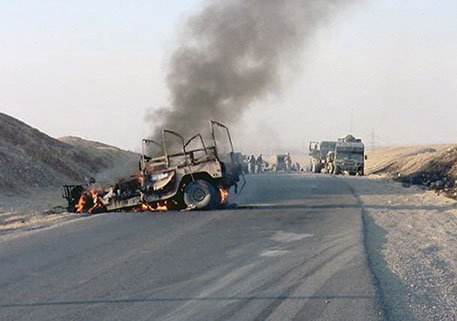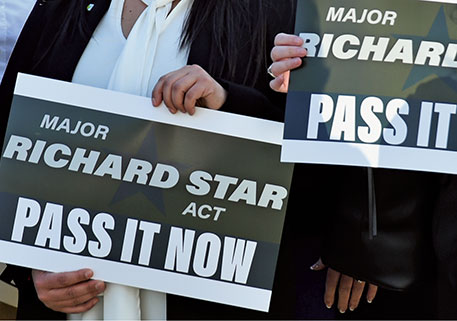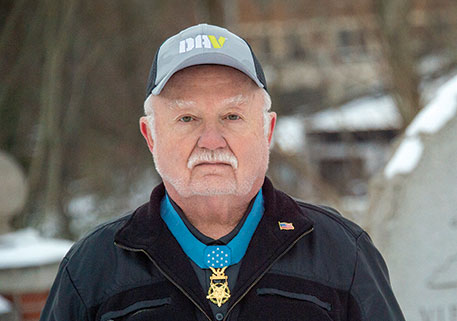DAV reaches million-member milestone, drives legislative changes for Agent Orange sufferers and POWs
Every year leading up to DAV’s 100th anniversary in 2020, the September/October issue of DAV Magazine will chronicle a decade in our organization’s history. This year’s installment provides some historical background and highlights of important issues and events that affected disabled veterans and their families during the 1980s.
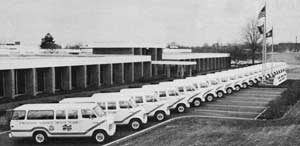 In 1980, a gallon of gas averaged $1.25, a postage stamp was 15 cents, and Ronald Reagan was preparing to move into the Oval Office.
In 1980, a gallon of gas averaged $1.25, a postage stamp was 15 cents, and Ronald Reagan was preparing to move into the Oval Office.
Relations between the United States and the Soviet Union were tense as the new decade dawned. The world watched and waited for the two biggest kids on the block to have an inevitable showdown; fear of nuclear horror gripped the planet.
“It was definitely a scary time,” said National Adjutant Marc Burgess. “The concept of terrorism wasn’t as prolific then as it is now. The country’s focus was mainly on economics and the Soviet threat.”
Despite combat operations throughout the decade in places like Grenada, Beirut and Panama, DAV’s senior leadership knew the American people’s attention span could quickly be lost.
“The public largely equated war to something that was fought on a grand scale on the battlefields of Europe or in the jungles of Vietnam,” said National Commander David Riley. “But what we saw in Beirut, when the Marine barracks were bombed, was a horrific omen for the threats we continue to face against terrorism.”
Something had to be done to ensure our nation didn’t forget about sacrifices made by those in uniform—in particular those who returned from Vietnam the previous decade.
DAV made a concentrated effort to recruit the new and younger generation of veterans into the ranks. The organization also tirelessly continued its mission of service and advocacy for veterans.
DAV fought a long battle to increase benefits for former prisoners of war. In 1981, this piece of legislation was signed into law and was the first improvement in POW benefits in almost 40 years.
The national legislative staff had, for several years, extensively advocated on behalf of Vietnam veterans suffering from exposure to Agent Orange. An out-ofcourt settlement was reached in 1984 with several of the chemical companies who had produced the toxic substance.
The same year, the courts found the U.S. government negligent in nuclear weapons testing held in Nevada from 1951 to 1962, which opened the doors for “atomic veterans” to access much-needed health care.
DAV reached a milestone in 1985 when, on April 22, membership officially numbered 1 million veterans. This effort was largely credited to the vision and tenacity of then-National Adjutant Dale Adams. When Adams had first taken the helm of the organization in 1962, there were only 200,000 members.
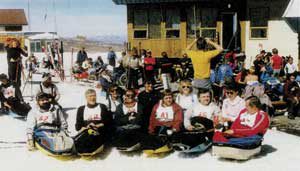
The inaugural “Miracles on a Mountainside,” the National Disabled Veterans Winter Sports Clinic, began in 1986. This is the largest rehabilitative program of its kind in the world today and directly aids in the rehabilitation of severely disabled veterans.
“DAV came on board as an event sponsor within the first few years of the program and, in partnership with the VA, the seeds we planted back then went on to produce the finest rehabilitative event of its kind in the world,” said National Voluntary Services Director John Kleindienst. “Since its start three decades ago, thousands of our most profoundly disabled veterans have seen their lives forever changed through the clinic.”
A year later, DAV established its nationwide Volunteer Transportation Network, which was a direct response to a need in the veteran community when the government eliminated the stipend many veterans depended on to defray the cost of getting to and from medical appointments.
The decade closed with the establishment of the U.S. Court of Appeals for Veterans Claims.
“The story history tells is that we were first opposed to the court. We were concerned that bringing in private attorneys could lead to veterans losing as much as a third of the benefits they earned,” said Jim Marszalek, National Service Director. “But ultimately, the court was defined by a DAV proposal that allowed veterans to be represented pro bono by accredited Service Officers.
“Because of that, we’ve been able to right many wrongs and develop some key precedents that have brought many veterans the justice that would otherwise have been lost to them.”
As the 1980s closed, war clouds again began to loom on America’s horizon, this time amid tensions in the Middle East.
1981 – POW bill passes – Thanks in part to DAV’s advocay efforts, the Former Prisoner of War Benefits Act becomes law.
1984 – Agent Orange – An out-of-court settlement is reached with several of the companies who had produced the toxic substance.
1985 – 1 million members – This major milestone is reached on April 22.
1986 – Miracles on a Mountainside – The inaugural National Disabled Veterans Winter Sports Clinic is held. DAV has partnered with the VA to host this life-changing event every year since.
1987 – Transporting veterans – DAV’s nationwide volunteer Transportation Network is established to transport veterans to/from medical appointments at VA faclilties.
1988 – Claims appeals – Defined by a DAV proposal that allowed veterans to be represented by accredited service officers, the U.S. Court of Appeals for Veterans Claims is established.


